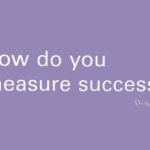Estimated reading time: 4 minutes
Managers – here’s a scenario you might be facing (or have faced in the past). You’ve got an employee who isn’t contributing their fair share. You know you need to address it. The rest of the team can tell this employee is a poor performer. If you don’t do something, your credibility will suffer. But what do you say?
The purpose of conversations like this isn’t to punish or discipline the employee. It’s to change their performance. That’s why you don’t want to delay the conversation. The longer you wait, the harder the conversation. Because the employee will think their behavior is acceptable since no one addressed it.
Here’s an outline you can use as you think about the conversation you want to have with the employee. Again, we’re not talking about situations where employees need to receive disciplinary action. Your organization has a policy in place for that – and if you have questions about discipline, you should address them with someone on the HR team. Think of these steps as a coaching conversation.
- Let the employee know your concern. Don’t minimize the importance of this conversation by spending a lot of time talking about the latest season of Only Murders in the Building and just a little on the topic of performance. This is an important matter and should be treated that way.
- Share what you have observed. Offer specifics about actual behaviors you’ve witnessed. If someone else witnessed the behaviors, try to have that person there. Employees don’t like the line “someone told me you did this…” If you’re trying to correct behavior, be able to specifically discuss behavior.
- Explain how their behavior impacts the team. Employees might not realize how their behavior negatively impacts the organization or the team. It’s important to draw a connection between their behavior and impact to the company. If negative impact can’t be explained, then an employee will question why they need to change their behavior.
- Tell them the expected behavior. It’s possible an employee will not know what they should be doing. Come to the discussion prepared to explain what the acceptable standard is and how an employee can achieve the standard. If an employee needs training or retraining, be prepared to suggest and support it.
- Solicit solutions from the employee on how to fix the situation. This is so important! Let the employee tell you what they’re going to do to fix the situation. They might suggest training (see #4 above). Bringing employees into the solution conversation creates buy-in. If you tell an employee what to do, they haven’t bought into it. Give the employee time to think about possible solutions.
- Convey the consequences. Let the employee know what will happen if the situation is not resolved. Sometimes the consequence is an employee will not be eligible for a transfer. Or they will not be able to participate in flex time. Maybe the next step is disciplinary action. Regardless, make sure the employee is aware of what happens if the matter isn’t resolved.
- Agree upon a follow-up date. No news is good news is not a management philosophy. After the employee agrees to work toward improving their performance, set a follow-up date to discuss progress.
- Express your confidence. Since the goal of this conversation is to improve performance, don’t be afraid to tell an employee you’re confident they can correct the situation.
No one likes to have a negative performance conversation. I always try to remember the purpose – it’s to help an employee change their behavior. If the conversation stays focused on helping the employee be successful then hopefully it never escalates to disciplinary action.
Performance conversations can be a bit scary – both for the person giving them and the person receiving the feedback. Take time to plan out your thoughts. Think of the different responses that could arise and how you would answer them. Preparation will make the conversation easier.
P.S. Regarding step #7 above about follow-up. If after this conversation, an employee starts showing improvement, don’t cancel the follow-up meeting! This is a perfect time to acknowledge the work the employee has done. It’s also a perfect time to ask the employee to share how they made it happen. That story – about how an employee turned their performance around – could provide proven strategies that may be helpful in the future.
Image captured by Sharlyn Lauby while exploring the streets of San Francisco, CA
The post Step-By-Step: Having a Performance Conversation with an Employee appeared first on hr bartender.










